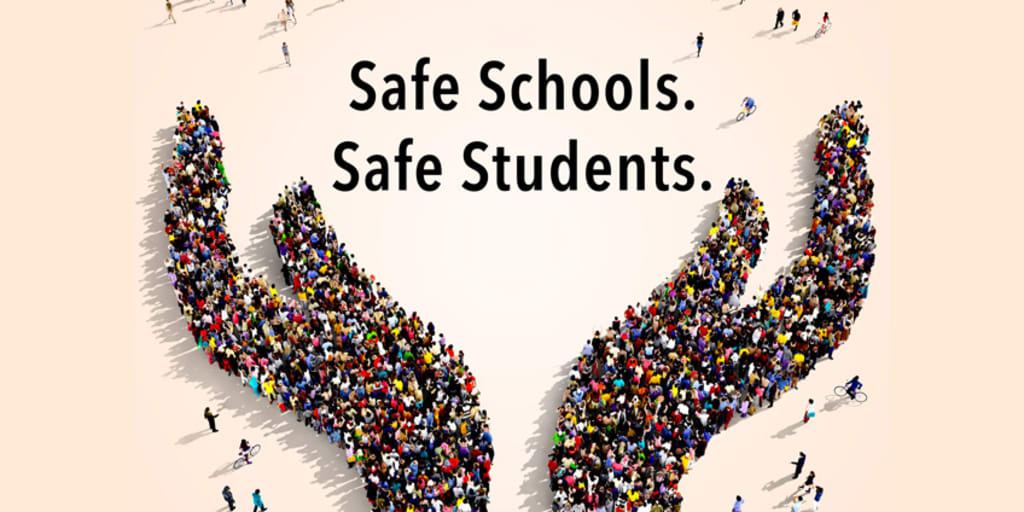The Florida Education System and School Safety
What the state of Florida is doing to make schools safe for its students

The following is an essay from my English Comp I class.
Imagine attending school in fear of something happening that is out of anyone's control. Every day, the question of whether something terrible will happen is in the air. School shootings, sexual assault in the bathrooms, and violence seem to be on the rise in more recent years than ever before. A sense of safety is just as crucial as actual safety.
As crime rises in high schools, the Florida education system needs to prioritize the safety of its students because those that feel safe can focus on learning better and achieving academic success.
What causes students to feel unsafe is essential when striving to implement the proper safety protocols. In February of 2018, a nineteen-year-old boy opened fire in Douglas High School, where he had attended the previous year. Reports of concern for his emotional well-being and social media presence did not spark enough interest from the Federal Bureau of Investigation (FBI). They admittedly failed to investigate the situation.
This failure led to the deaths of seventeen students and injuries to fifteen more that Valentine's Day (Blad and Superville). The crime does not end at school shootings. In a study between 2017 and 2018, there were fifty-six school-related violent deaths, with forty-six homicides, nine suicides, and one legal intervention involving a police officer ("School Crime"). Instances like this school shooting are where the perception of safety and the reality of safety come into play.
The social development of students within schools highly impacts their comfort within the learning environment. The school system should work diligently to ensure that students are safe within schools and feel safe as well ("Students Perceptions of Safety").
Tony Montalto, whose fourteen-year-old daughter was a victim in the Douglas High School Shooting, says, "We're cognizant of people not wanting Washington in their schools, but one thing the federal government does, in general, is they are excellent in providing us with safety standards. Safety standards for our cars, safety standards for aircraft, safety standards for the car seats that we put our children in.
So why shouldn't there be safety standards for safe schools?" However, after the shooting occurred, no new mandates for new safety measures were put into place. Deborah Temkin, the vice president for youth development and education research organization, offered for schools to gear safety measures more towards the environment and mental health awareness than providing more armed guards, metal detectors, and harsh security measures.
Temkin recognizes that the public, including the school board, does not fully understand what is working and what is not. She is concerned about the potential negative impact the policies might have on students, especially the effects of active shooter training students receive every year.
In the wake of crime-related incidents in schools, Florida has passed a new bill related to new and existing safety protocols for both students and faculty. The bill calls for the school board to account for all students and maintain control of them while they are in attendance. They should also be aware of the health, safety, and anything else about the well-being of students ("Chapter 1006").
The Zero Tolerance Policy for Crime and Victimization applies equally to all students. It involves any behavior that threatens the school, such as bringing a firearm or other weapon and making a false threat or report. The Policy also includes petty misconduct that does not directly threaten the safety of the school and does not require law enforcement.
New disciplinary action protocols are calling for every student to be accountable for their behavior. All disruptive students must be addressed and removed from the situation, whether in a classroom, hallway, or bus. Threat assessment teams are on standby to predict whose behavior is dangerous to the school environment.
The state also implemented a student crime watch program that allows students and the community to safely report any suspicious activity among their peers to school officials anonymously ("Chapter 1006"). The statute also includes the Florida Safe Schools Assessment Tool (FSSAT), defined as a program to develop, update, and implement a risk assessment tool used by school officials in each school district.
The program was designed to identify threats and vulnerabilities and recommend safety protocols. The section for criminal penalties applies only to high school students and involves hazing. Any student that coerces another into violating state and federal laws, abusing liquor, drugs, or other substances, or is physically abusive to another student will face criminal charges.
The punishments associated with the crime include a public apology, a four-hour education course on hazing, and drug and alcohol probation if it applies. The defendant may also have to participate in a campaign to raise awareness for hazing and its penalties (“Chapter 1006”).
More crime-related incidents are happening every year, causing students' perception of safety to dwindle. If school shootings, sexual assaults, and other crime-related incidents continue to rise, then the public school system will get smaller and smaller until there are not any students left to teach.
When it comes to our youth, not only is safety in their environment essential, but so is their internal sense of feeling safe. It is the job of the federal and state governments to assess students’ perception of safety and enforce protocols to ensure that all students can focus on learning and achieve their academic success.
Sources:
Blad, Evie and Superville, Denisa R. “Lost Sense of School as a Safe Place.” Education Week, 7 Mar 2018, Vol. 37 Issue 23, p10-11. https://web.s.ebscohost.com/ehost/detail/detail?vid=0&sid=1ab41085-a801-44e4 b1fc66e3ac51ab91%40redis&bdata=JkF1dGhUeXBlPXNoaWImc2l0ZT1laG9zdC1saXZl#AN=128430627&db=eue. Accessed 7 Nov. 2021.
“Chapter 1006: Student Discipline and Safety.” Nov. 21, 2021: http://www.leg.state.fl.us/statutes/index.cfm?App_mode=Display_Statute&URL=1000-1099/1006/1006.html. Accessed 7 Nov. 2021.
“Fast Facts: School Crime.” National Center for Education Statistics https://nces.ed.gov/fastfacts/display.asp?id=49. Accessed 7 Nov. 2021.
Sawchuk, Stephen. “Federal School Safety Center Focuses on Prevention.” Education Week, 26 Feb 2020, Vol. 39 Issue 23, p8-8. https://web.s.ebscohost.com/ehost/detail/detail?vid=0&sid=30814689-31b3-4588-9ae9c645646a9a10%40redis&bdata=JkF1dGhUeXBlPXNoaWImc2l0ZT1laG9zdC1saXZl#AN=141929122&db=eue. Accessed 7 Nov. 2021.
“Students Perceptions of Safety and Their Impact on Creating a Safe School Environment.” Readiness and Emergency Management for Schools Technical Assistance Center: https://rems.ed.gov/docs/Student_Perceptions_Safety_Fact_Sheet_508C.pdf. Accessed: 7 Nov. 2021.
About the Creator
Lauren J. Bennett
Published author, licensed massage therapist, and double major in Criminal Justice and Philosophy. I have 4 dogs and my car is named after my favorite character on finding Nemo. Fish are friends, not food. Read my stuff. With love, Lauren.






Comments
There are no comments for this story
Be the first to respond and start the conversation.